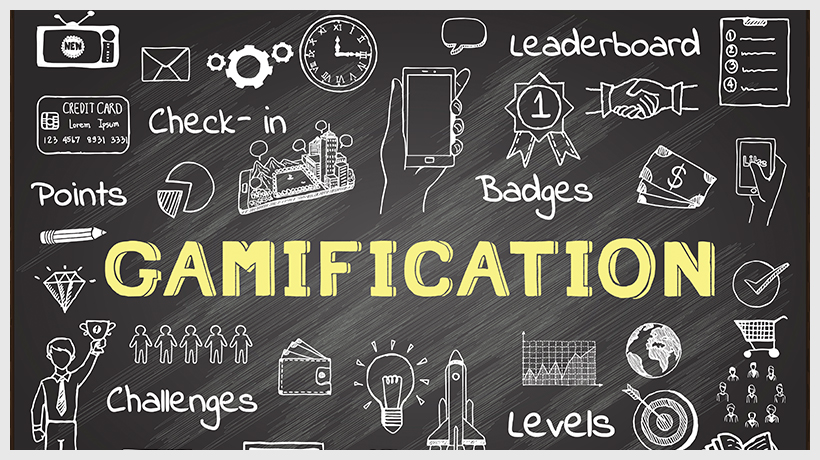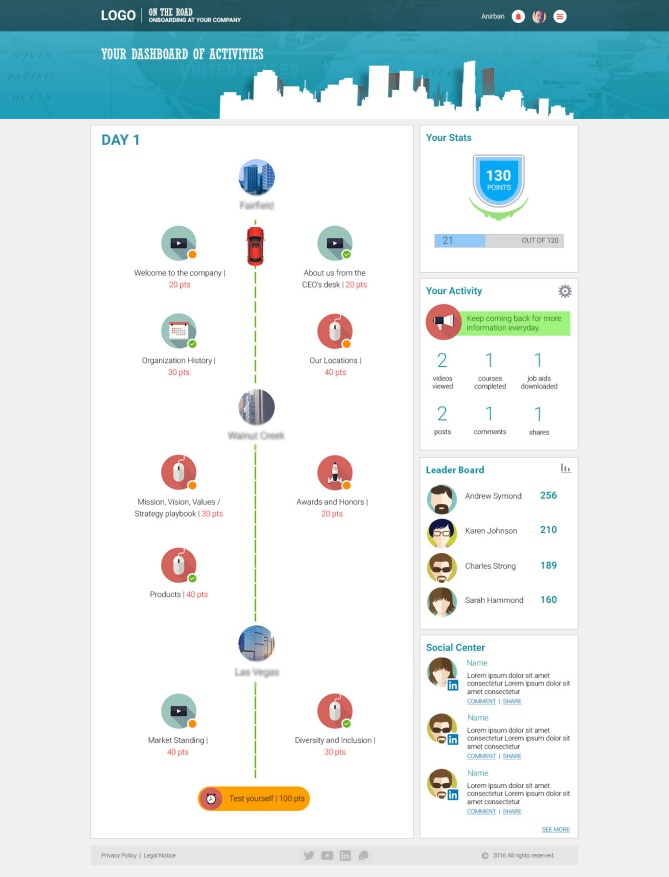In one of my earlier articles published in eLearning Industry portal on Aug 30th’14, I had shared a case study on the benefits of Gamification in learning (through a serious game concept).
Gamification In Learning
In this article, I am sharing another case study using the same content (on Account Management Fundamentals) but re-designed using an Avatar-based approach. I will also share the gains that accrued with this enhanced approach.
While Gamification has been applied in several domains, our focus has been on its application in learning. The games that we design are therefore geared to meet definite learning outcomes and our Gamification strategies broadly map to:
-
- Tasks or concepts that are overlaid on the learning content but are not related to the content
- Contextual tasks or concepts that are overlaid on the learning content
- Partial Gamification (notably in inline checks and end of course assessments)
Background
We had to re-design a quick online training for Project Managers who were being groomed to handle Account Management practices.
The course on Account Management Fundamentals outlined the basics of account management and more specifically, what they must do to move their organization up the value chain. The learners needed to understand two aspects:
-
- Their organization’s view that was to scale the newly acquired/existing customer to an Account and then to a Key Account
- The need to work on changing the customer’s view and scale their organization from a service vendor to a strategic partner (This journey was mapped to four levels/quadrants and it represented the challenges that the learners must face to accomplish the required mandate.)
![]()
The new brief
The need for re-design arose on account of two aspects:
-
- The first was on account of varied backgrounds of learners. The target learners included Project Leads, Associate Project Managers, Project Managers, and Program Managers. The typical Project Management experience ranged from three years to 10 years.
- The second was to have learners face challenges that mapped to their experience. In the initial concept, all learners went through an identical learning path featuring identical questions. However, in real life, the more experienced professionals would face trickier situations as they will handle bigger and more challenging accounts.
The revised concept
After reviewing the new brief, my team came up with an Avatar-based Gamification approach. The highlights of this approach were:
-
- Creation of different learner paths
- Alignment of the learning and Gamification path to the proficiency of learners
- Presentation of a mix of questions in each path (mapping to real life challenges commensurate with the proficiency level of the learners)
- Non-availability of learning aids of theory (lifeline) for higher proficiency learners to make the challenge tougher. (The complexity and the nature of the challenges posed to the learners tested their cognitive proficiency to tackle the situation at hand, thereby resulting in immersive learning.)
What we retained
From the original Gamification concept, we retained the overall look and feel and the Introduction.
![]()
We updated the rules of the game to sync up with the new approach.
![]()
Then we added the Avatar selection frame.
For the learners choosing more than eight years of experience, we provided a different path. After the Avatar selection, a Jeopardy game was presented to test their fundamentals on Account Management. Specifically,
-
- A good score enabled them to move directly to Level 2.
![]()
- 2. However, if they scored less than 60%, they were provided with a friendly message nudging them to take up Level 1:
![]()
This is the landing page of Level 1. The Avatar chosen at the time of selection was in the middle. The challenges were presented on clicking or selecting the objects with the (+) symbol.
![]()
This was a sample question/challenge. On answering correctly, the learners were awarded a star as highlighted. We provided different question banks for each path that matched the challenges with the experience of the learners.
![]()
We also added surveys to seek inputs on the learners’ current understanding of Project Management.
![]()
The gains
We were able to match the learner proficiency to a specific learning path that gave them the right insight on how to handle customers. The Avatar-based approach helped us carry out this mapping.
Read More:
- Go Beyond Badges And Leaderboards: 5 Examples Of Gamification In Corporate Training
- Why Adopt Gamification For Corporate Training – 8 Questions Answered
- How Gamification Will Impact Corporate Learning
Source: https://www.eidesign.net/gamification-in-learning-through-an-avatar-based-serious-game-concept/




